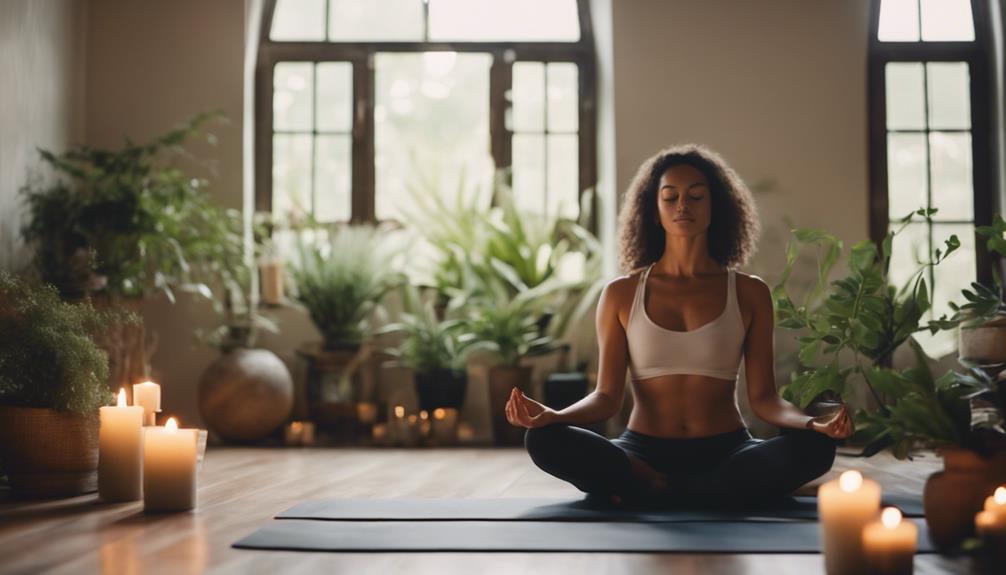What Makes A Good Yoga Mat

Yoga is more than just a physical practice; it’s a lifestyle that promotes mental clarity, emotional stability, and overall well-being. One of the essential tools for any yoga practitioner is a high-quality yoga mat. In this comprehensive guide, we’ll explore what makes a good yoga mat, the different materials available, and how to choose the best one for your practice.
Understanding the Importance of a Good Yoga Mat
A good yoga mat serves as the foundation for your practice, providing stability, comfort, and support during various poses and transitions. The right mat can enhance your practice by preventing slips and injuries, while also offering cushioning for your joints. Without a good yoga mat, your experience may be compromised, leading to frustration and potential harm. The significance of a quality mat cannot be overstated, as it can make or break your yoga journey.
Key Features to Look For in a Yoga Mat
When searching for the perfect yoga mat, several key features should be considered. Firstly, thickness is crucial. A standard yoga mat is usually about 1/4 inch thick, which provides a balance between cushioning and stability. However, thicker mats may be better for those needing extra support for their knees or joints. Secondly, material plays a significant role. Common materials include PVC, TPE, natural rubber, and jute, each offering different levels of grip, durability, and eco-friendliness. Lastly, consider the texture of the mat, as this affects how well you can hold your poses without slipping.
Material Matters: Choosing the Right Yoga Mat Material
The material of a yoga mat significantly impacts its performance and your overall experience. PVC mats are popular due to their durability and affordability, but they are not eco-friendly. TPE (Thermoplastic Elastomer) mats are a more sustainable choice, offering a lightweight and non-toxic alternative. Natural rubber mats provide excellent grip and cushioning, making them a favorite among serious yogis, but they can be pricier. Finally, jute mats offer a unique texture and are biodegradable, appealing to those who prioritize environmental sustainability. When selecting a yoga mat, consider your personal values and how they align with the materials used.
Related Posts:
Grip and Texture: The Key to Stability
Grip is arguably one of the most crucial factors when it comes to what makes a good yoga mat. A mat with excellent grip can prevent slips during challenging poses, allowing you to focus on your practice without the fear of falling. Textured mats, such as those made from natural rubber, provide superior traction, while smoother mats may require the use of a towel for added grip. When testing a mat, pay attention to how it feels under your hands and feet. A good yoga mat should provide confidence and stability, enhancing your practice rather than detracting from it.
Cushioning and Support: Comfort is Key
Comfort is essential for any yoga practice, especially for those with joint issues. A good yoga mat should offer adequate cushioning to protect your knees, wrists, and spine during poses. Thicker mats provide more cushioning but can sometimes compromise stability, so it’s essential to find a balance that works for you. If you’re new to yoga or have specific physical considerations, investing in a well-cushioned mat can make a significant difference in your overall experience. Remember, a comfortable mat encourages longer practice sessions and a more enjoyable journey toward mindfulness and fitness.
Size and Portability: Finding the Right Fit
Yoga mats come in various sizes, and selecting the right dimensions is vital for your practice. Standard mats are typically 68 inches long and 24 inches wide, but taller individuals may prefer longer mats to accommodate their height. Additionally, consider the weight of the mat, especially if you plan to carry it to classes or outdoor locations. Lightweight mats made from materials like TPE are easy to transport, while thicker rubber mats may be heavier but offer more support. Finding a mat that fits both your size and lifestyle can enhance your overall yoga experience.
Eco-Friendly Options: Sustainable Choices for Yogis
As yoga practitioners become more environmentally conscious, the demand for eco-friendly yoga mats has surged. A good yoga mat not only supports your practice but also aligns with your values regarding sustainability. Look for mats made from natural materials like rubber or jute, which are biodegradable and free from harmful chemicals. Additionally, many brands now offer mats that are produced using environmentally friendly processes. Supporting eco-friendly companies not only benefits the planet but also contributes to a healthier yoga community.
Maintenance and Care: Prolonging the Life of Your Yoga Mat
To get the most out of your yoga mat, proper maintenance and care are essential. Regular cleaning helps prevent the buildup of bacteria and odors, ensuring a hygienic practice environment. Most mats can be wiped down with a mild soap solution and water, but always check the manufacturer’s instructions for specific cleaning guidelines. Additionally, storing your mat in a cool, dry place away from direct sunlight can prevent material degradation. By taking care of your yoga mat, you’ll prolong its life and maintain its performance for years to come.
Final Thoughts: Choosing Your Perfect Yoga Mat
In conclusion, selecting a good yoga mat is a personal journey that involves considering various factors, including material, thickness, grip, and eco-friendliness. A high-quality mat can significantly enhance your practice, providing the stability, comfort, and support you need. By understanding what makes a good yoga mat, you can make an informed decision that aligns with your practice and personal values. Whether you’re a seasoned yogi or just starting, investing in the right mat is a step towards a fulfilling yoga journey. Explore your options, do your research, and find the mat that resonates with you to elevate your practice.
With this guide, you’re now equipped with all the knowledge you need to choose the perfect yoga mat for your needs. Happy practicing!